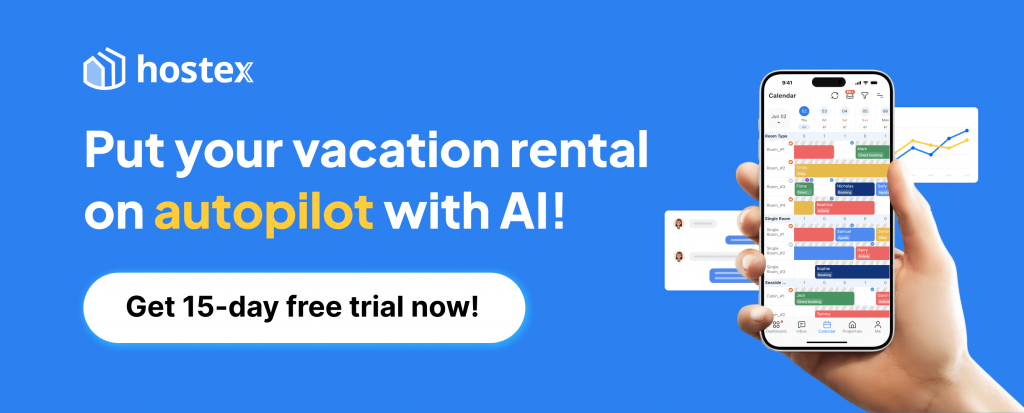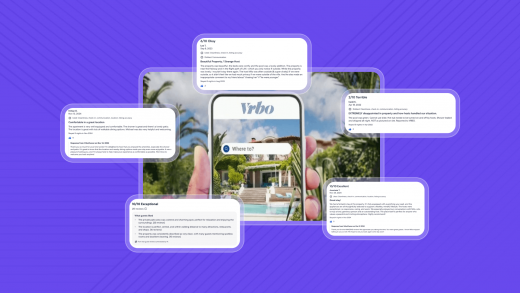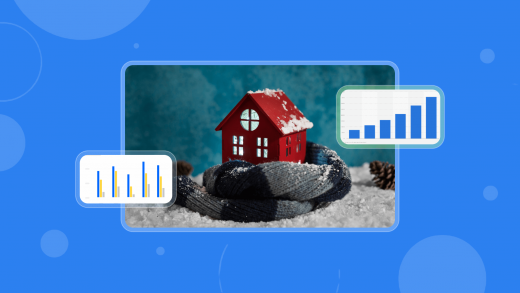Dynamic pricing has become essential for short-term rental hosts and property managers. The right Airbnb pricing tool can do more than just update your rates. It can help you increase revenue, smooth occupancy, and free you from constant manual adjustments.
This guide will explore some of the best Airbnb pricing software, comparing their features and performance to help you make informed decisions.
If you manage properties across multiple platforms like Airbnb, Vrbo, Booking.com, or Expedia, tools like Hostex can automatically sync the rates generated by pricing software. It automates over 70% of daily tasks, including guest messaging, bookings, and cleaning coordination, starting at just $4.9 per month.
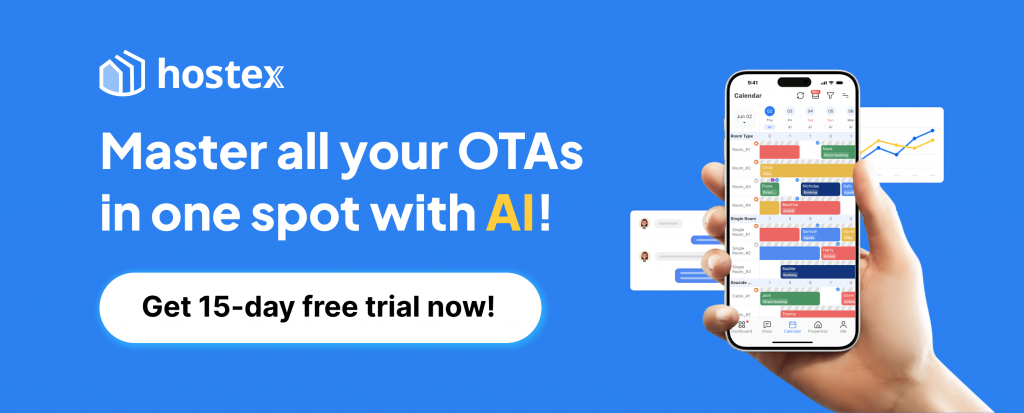
What Is Airbnb Dynamic Pricing?
Dynamic pricing is the cornerstone of any effective Airbnb pricing tool. It uses real-time data and market insights to help hosts set rates that maximize revenue while keeping occupancy steady.
A smart Airbnb pricing tool considers multiple factors: property type, location, local competition, seasonal trends, booking patterns, and even nearby events. It then recommends optimal nightly rates and minimum stay requirements.
These rate suggestions can be synced across platforms through a property management system (PMS), allowing you to manage Airbnb, Vrbo, Booking.com, and Expedia listings efficiently. The result is a streamlined workflow that reduces manual adjustments and ensures your pricing stays competitive.
In essence, dynamic pricing turns complex market data into actionable decisions, giving hosts a clear advantage without the constant guesswork.
How to Choose the Right Airbnb Pricing Tool
Selecting the right Airbnb pricing software can make a significant difference in your vacation rental business. Not all pricing tools are created equal, so it’s important to consider several factors before making a choice.
1. Data Accuracy and Sources
The effectiveness of any Airbnb pricing software depends on the quality of its data. Look for tools that pull information from multiple sources, including local demand, competitor pricing, historical occupancy, seasonal trends, and local events. The more comprehensive the data, the more accurate the pricing recommendations.
2. Customization Options
Hosts have different goals and property types. Therefore, the ability to customize rules is essential. Check whether the tool allows you to adjust minimum stay requirements, seasonal pricing, length-of-stay discounts, and weekend or weekday pricing. Flexibility ensures the tool aligns with your specific strategy.
3. Ease of Use and Learning Curve
Some Airbnb pricing tools are simple and intuitive, while others require time to master advanced features. Consider your own comfort level with software and your willingness to invest time in setup. A tool should save you time, not create extra complexity.
4. Integration with PMS and OTAs
For multi-channel hosts, the ability to sync rates across multiple platforms is crucial. Make sure the pricing tool integrates with your property management system or can directly push updates to Airbnb, Vrbo, Booking.com, and other OTAs. This reduces manual work and prevents rate discrepancies.
5. Pricing and ROI
Evaluate the cost of the software against the potential revenue increase. Some tools charge per listing, while others offer tiered plans. Consider whether the tool’s features justify the price and how quickly you can expect a return on your investment.
6. Support and Updates
Dynamic pricing tools should evolve with market conditions. Check whether the platform provides timely updates, responsive customer support, and educational resources. This ensures you can troubleshoot issues and stay ahead of market trends.
7. Trial and Testing
Finally, consider testing the software before committing. Many Airbnb pricing tools offer free trials or demo accounts. Use this opportunity to see how the recommendations perform on your properties and whether the interface suits your workflow.
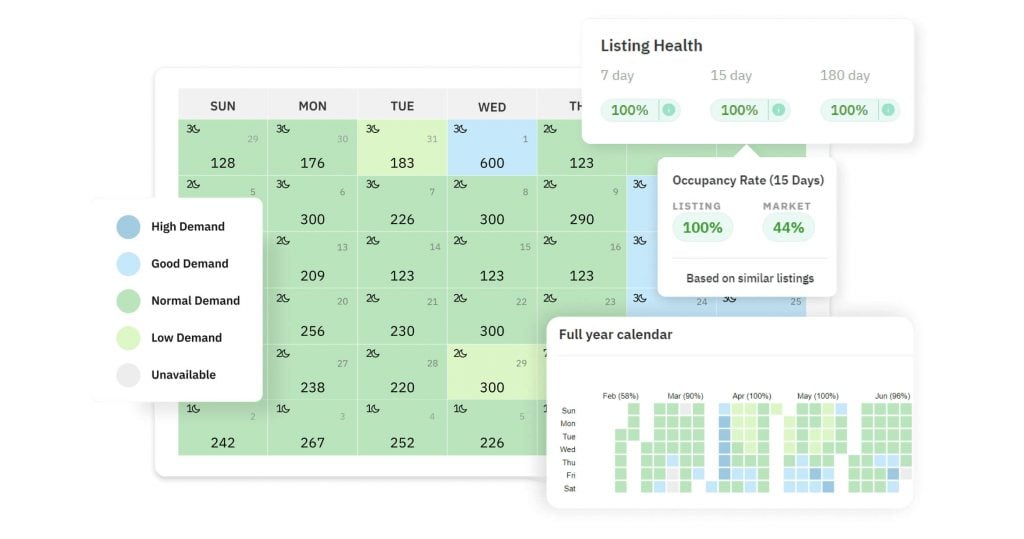
Best Airbnb Pricing Tools in 2025
When selecting an Airbnb pricing tool, it’s crucial to consider platforms with extensive data sets. Larger platforms can provide more accurate and effective pricing recommendations.
Below is an in-depth analysis of four leading dynamic pricing tools: PriceLabs, Beyond, Wheelhouse, and Rategenie.
1. PriceLabs
PriceLabs is a dynamic pricing and revenue management platform for the short-term rental and hospitality industry.
Key Features:
- Data Sources: Utilizes local demand, competitor pricing, occupancy rates, and seasonal trends to set optimal prices.
- Rule Complexity: Offers advanced customization options, including minimum stay requirements, seasonal pricing, and length-of-stay discounts.
- Learning Curve: User-friendly interface with a moderate learning curve for advanced features.
- Pricing: Starts at $19.99 per month per listing.
- Ideal For: Hosts, property managers, and revenue managers seeking granular control over pricing strategies.
Additional Insights:
- Market Dashboards: Provides actionable insights into local market trends and competitor performance.
- Revenue Estimator Pro: Allows users to estimate potential earnings for any property address.
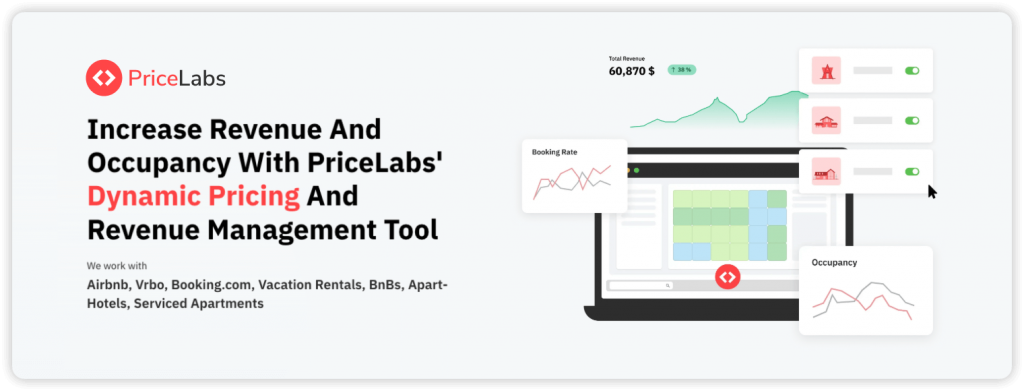
2. Beyond
Beyond is a revenue management platform that offers dynamic pricing solutions for short-term rentals.
Key Features:
- Data Sources: Analyzes a vast array of data points, including market demand, competitor pricing, and local events.
- Rule Complexity: Provides automated pricing adjustments with customizable settings for advanced users.
- Learning Curve: Designed for ease of use with minimal setup required.
- Pricing: Offers flexible pricing plans; specific rates are available upon request.
- Ideal For: Hosts and property managers looking for automated pricing solutions with minimal manual intervention.
Additional Insights:
- Signal: A direct booking website builder included in the platform.
- Market Insights: Offers real-time data on market trends and competitor performance.
3. Wheelhouse
Wheelhouse is a revenue management and dynamic pricing platform tailored for short-term rentals.
Key Features:
- Data Sources: Leverages over 15 data points, including market demand, competitor pricing, and local events.
- Rule Complexity: Allows users to choose between rule-based and data-driven pricing strategies.
- Learning Curve: Provides a flexible interface suitable for both beginners and advanced users.
- Pricing: Offers various pricing plans; specific rates are available upon request.
- Ideal For: Hosts and property managers seeking a balance between automation and manual control.
Additional Insights:
- Customizable Pricing: Users can adjust pricing strategies based on specific market conditions.
- Scalability: Suitable for managing multiple listings across different platforms.
4. Rategenie
Rategenie is a dynamic pricing tool designed for short-term rental hosts and property managers.
Key Features:
- Data Sources: Analyze occupancy rates, historical trends, and market demand to set optimal prices.
- Rule Complexity: Offers simple pricing strategies with the option for advanced customization.
- Learning Curve: Easy to use with a straightforward setup process.
- Pricing: Starts at $15.99 per month per listing.
- Ideal For: Hosts and property managers looking for an affordable and user-friendly pricing solution.
Additional Insights:
- Daily Updates: Automatically updates rates daily across multiple channels.
- Integration: Compatible with various property management systems for seamless operation.
📊 Comparison Table
| Feature | PriceLabs | Beyond | Wheelhouse | Rategenie |
|---|---|---|---|---|
| Data Sources | Market demand, competitor pricing, and local events | Local demand, competitor pricing, occupancy rates, and seasonal trends | Occupancy rates, historical trends, and market demand | Occupancy rates, historical trends, market demand |
| Rule Complexity | Advanced customization | Automated with customizable settings | Rule-based and data-driven strategies | Simple with advanced options |
| Learning Curve | Moderate | Easy | Flexible | Easy |
| Pricing | From $19.99/month | Flexible plans | Various plans | From $15.99/month |
| Ideal For | Hosts seeking granular control | Hosts seeking automation | Hosts seeking balance | Hosts seeking affordability |

Frequently Asked Questions About Airbnb Pricing Tools
1. Is dynamic pricing safe?
Yes. Dynamic pricing is designed to optimize your rates based on real market data. These tools analyze factors such as competitor pricing, local demand, seasonality, and events. As long as you set clear rules and minimum thresholds, dynamic pricing is a safe way to maximize revenue without undervaluing your property.
2. How often do pricing tools update rates?
Most Airbnb pricing tools update daily, while some can refresh multiple times per day depending on demand shifts. Frequent updates help you stay competitive and capture last-minute bookings.
3. Can I override the tool’s recommendations?
Yes. All major pricing tools allow hosts to manually adjust rates whenever needed. This flexibility ensures you stay in control of your business, especially during special circumstances when you want to set a custom price.
4. Why isn’t Airbnb Smart Pricing enough?
Airbnb Smart Pricing is easy to use but has key limitations. It offers little control over rate adjustments, does not fully account for local events or sudden demand shifts, and lacks detailed rule settings such as price floors or ceilings. As a result, many hosts find it undervalues their listings. A dedicated Airbnb pricing tool provides more flexibility, better data insights, and stronger revenue management.

Final Thought: Pro Tips for Maximizing Your Revenue with Airbnb Pricing Tool
If you are just starting out with a pricing tool, here are some extra tips that can help you get the most out of it:
1. Think strategically, not just automatically
You can let the software run on autopilot, but the best hosts develop their own pricing mindset. That way, you can judge whether the tool’s suggestions truly fit your goals and adjust when needed.
2. Protect your margins with clear limits
Always set a minimum rate that covers costs and secures your profit. At the same time, define a reasonable maximum for peak seasons to stay competitive without pricing yourself out of the market.
3. Use every feature available
Pricing tools evolve quickly and often add new capabilities. Keep learning and exploring updates to ensure you are taking full advantage of what the software can deliver.
4. Track performance with real data
Regularly review occupancy, ADR, and revenue trends. These insights show how effective your pricing strategy is and where adjustments may be necessary.
5. Automate the process with a PMS
Most pricing tools push rates only to one channel. When integrated with Hostex, your pricing, stay rules, and restrictions sync seamlessly across Airbnb, Vrbo, Booking.com, and your direct booking site.
You can even apply channel-specific markups. This creates a smooth workflow and saves you from endless manual updates.
